The city of Dubrovnik is one of the tourist gems of the Adriatic with a great location and an exciting history, dating back to both the Roman Empire and the centuries as an independent republic with a large and thriving trade.
The old town behind the heavily fortified walls and towers is the heart of the city and the reason that so many tourists visit Dubrovnik. Narrow alleys, beautiful streets and fine squares with a wealth of architectural masterpieces are some of the things you find here. The prosperous past of the city as Ragusa does reflect the city scene along, for example, the main street Stradun.
The Rector’s Palace was the political center of the Republic of Ragusa, and the Ragusian city hall, bell tower, several churches and lavash residences were built in the sam neighborhood. They still stand as a beautiful composition of the rich and bygone era.
Dubrovnik’s location between the Adriatic Sea and the Dinaric Alps, which rises steeply immediately behind the city, is picturesque, and fortunately it’s easy to reach the heights. With Dubrovnik Cable Car, you can get to viewpoint with unforgettable panoramas to the city and the sea. From here you can see Dubrovnik’s many defense works around the maze of perpendicular streets behind the walls.
Dubrovnik’s suburbs are also worth a stroll; there are many beautiful views along the Adriatic coast on the way north towards the city’s port. The coastline is a fine view, and it is also the case to the north and south of Dubrovnik. The Montenegrin coastal towns and beautiful landscapes around the Bay of Kotor are of particular interest.
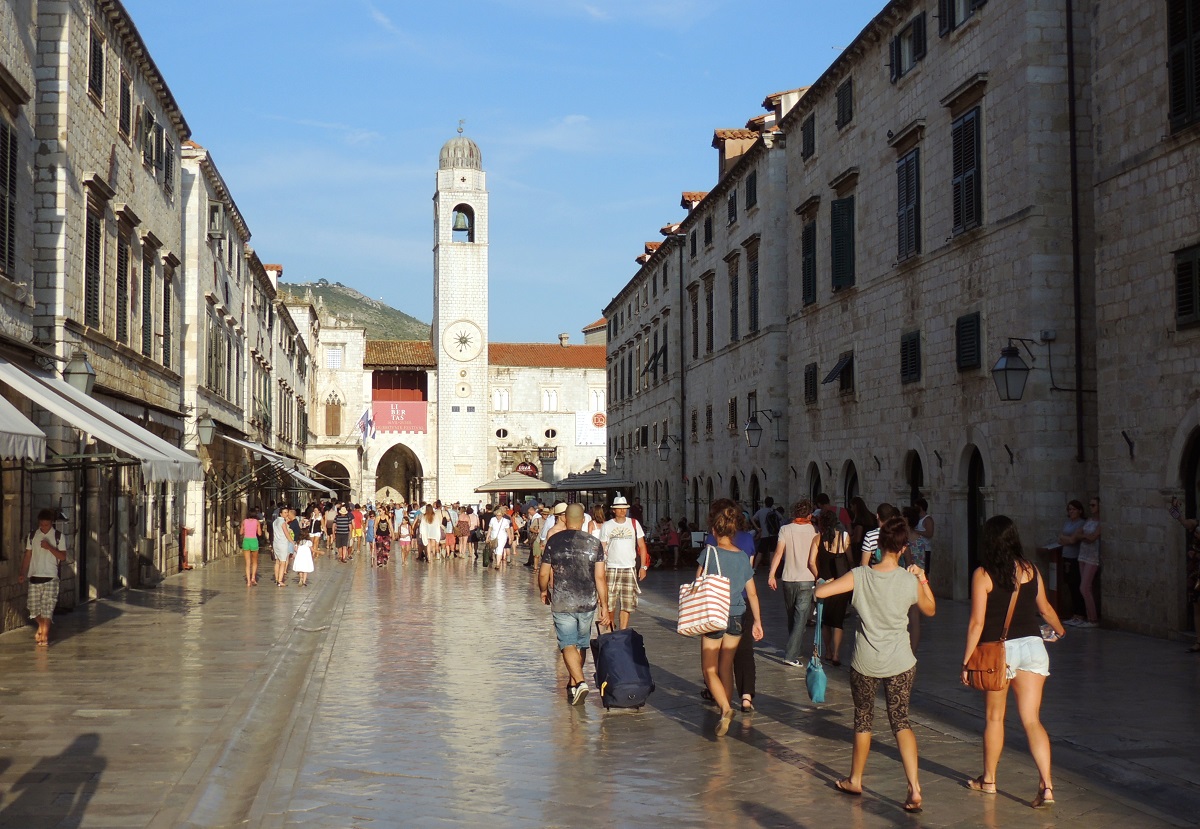




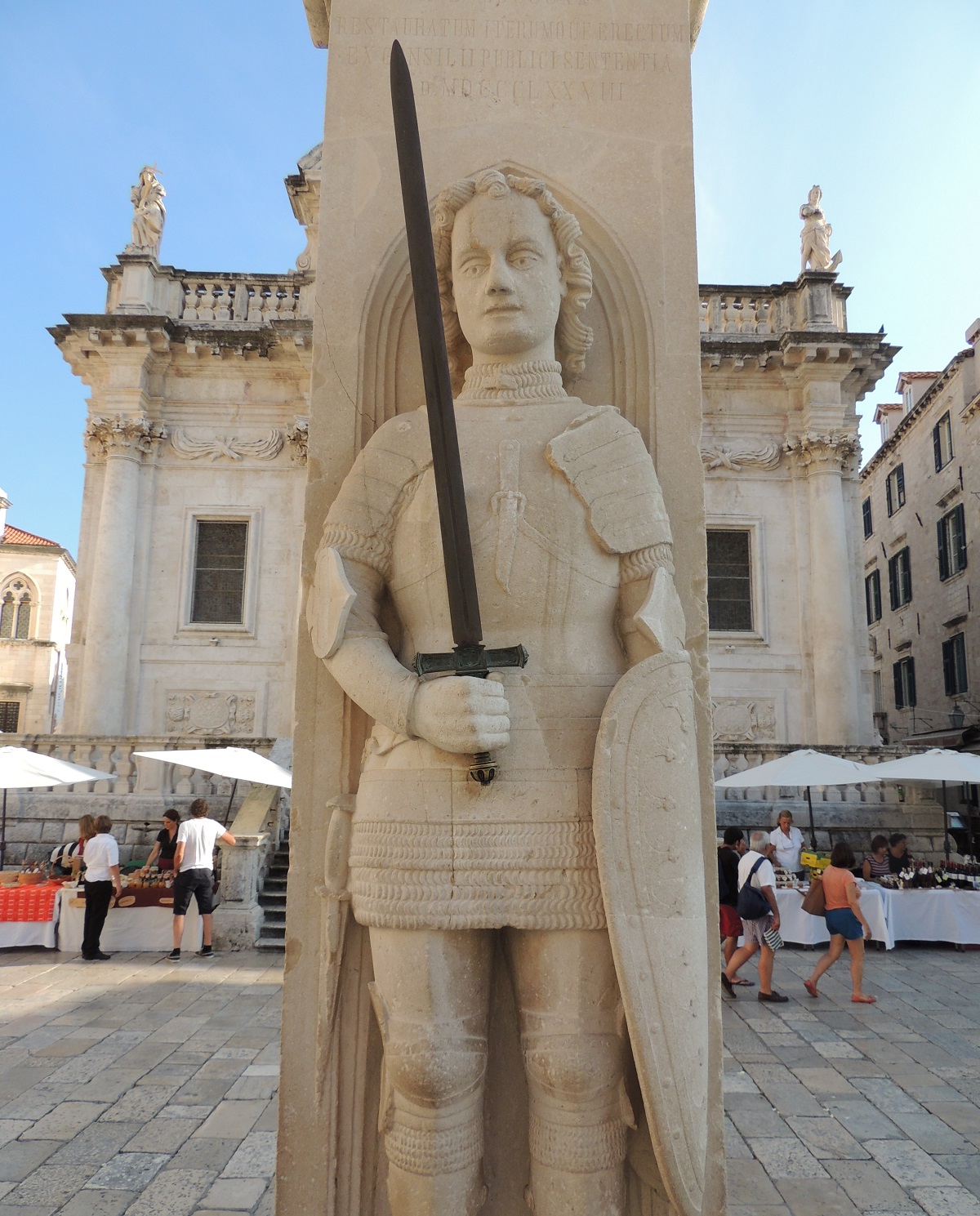

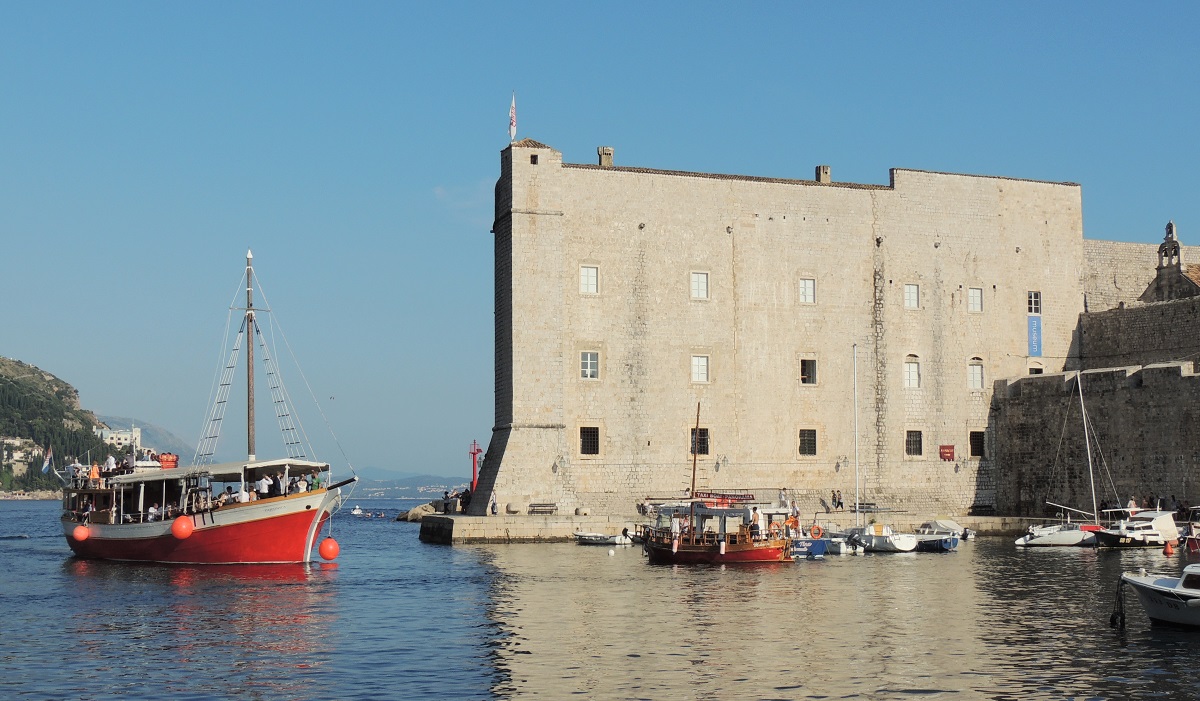
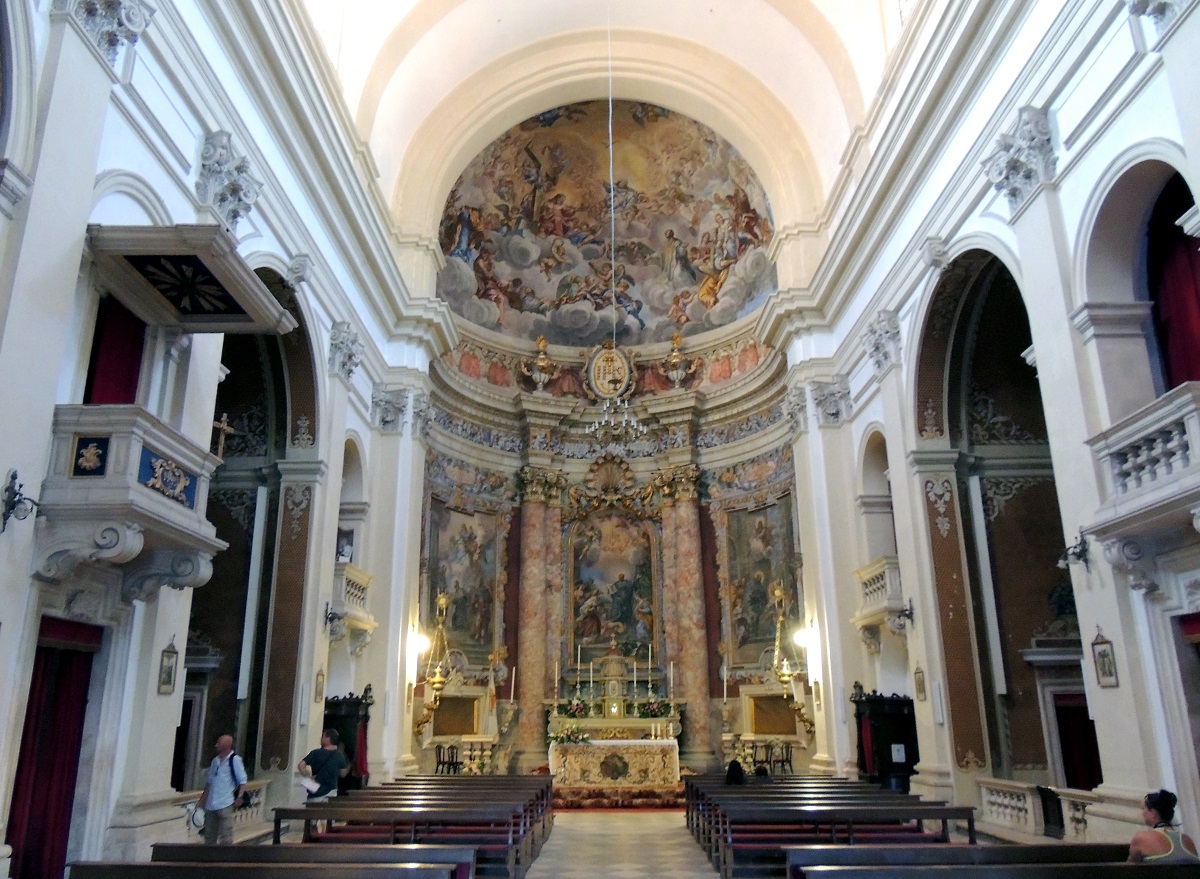

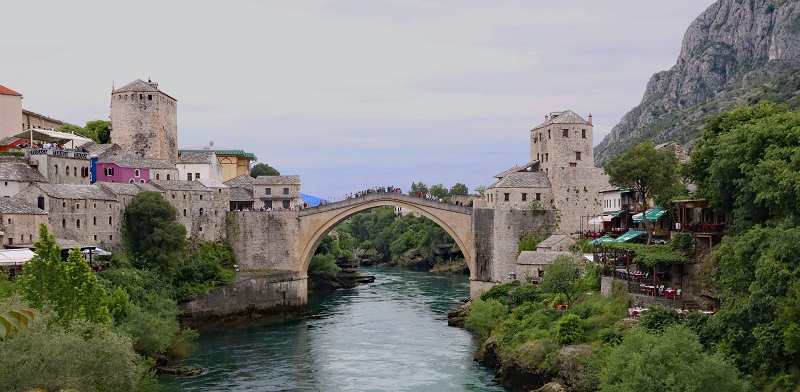


The Roman Epidaurum
Where today’s Cavtat is located, the Roman city of Epidaurum was home to up to 40,000 people. It was a place that was strategically well located on the trade routes in the area, and thus the economy thrived.
With the century-long decline of the Roman Empire, the Epidaurum was also affected. At first it was an earthquake that struck, and later the city was plundered by some of the invading tribes, who came in larger volumes to the regions of the Adriatic coast.
The remaining Epidaurum inhabitants fled northwest along the coast, where they settled on the island of Laus, and that settlement eventually developed into Ragusium, which became part of today’s Dubrovnik.
Dubrovnik’s first centuries
In the 600s, Croatian tribes came to the area around the Strait of Laus, where they established a settlement called Dubrovnik. The Croatian and former Roman population lived as in two cities with internal trade.
It did not take long for the two settlements to develop into a unified city and this quickly became larger and economically important in the area. By the 8th century, it had also become so strong that it could withstand the 15-month siege exposed by the Syrian Saracens.
In the 11th century, the two former cities were physically joined together as the narrow channel between the districts was filled. The filling created the street Stradun, which remains the unifying street in Dubrovnik’s old town.
Thriving economy and politics
Dubrovnik developed rapidly. There were skilled craftsmen and good merchants, who among other things exploited Epidaurum’s traditions in shipbuilding and the area’s many oak forests, which represented considerable value. As a result, Dubrovnik was, after a few centuries, a center for both trade and shipping.
Dubrovnik formally belonged to the Byzantine Empire as a protectorate, but as early as the 12th century the city elected its own rector, constituting a political authority with increasing powers. However, the partial political freedom did not last long.
The Venetian time
One of the great powers of the time was the Republic of Venice, which was a major trade and maritime nation. In 1205, Venice conquered Dubrovnik, and the Italian city-state came to rule for the next approximately 150 years.
Venice appointed members to Dubrovnik City Council, thereby greatly reducing the city to a form of directly controlled Venetian rule, which for a time slowed the otherwise rapidly developing economy.
Respublica Ragusina
Dubrovnik was during Venice’s time through the 1200-1300s known as Communitas Ragusina. That changed with the 13th century’s submission of Austrian domination with local autonomy.
During this period, the city became Respublica Ragusina and was thus a republic, although it formally belonged to the Austrian monarchy. As a republic, the city developed again and it became one of Venice’s competitors in the Adriatic.
Throughout the following centuries, the heyday continued, building on trade and diplomacy. A neutrality, even helping several warring parties at the same time, was crucial to the republic’s freedom. It was managed to also trade with both the British Isles and India, where there was a consul in Goa.
The city and the republic were of an international nature and attracted many foreign merchants. The official language was Latin until 1472, after which a local variant of the Romanian language was changed. However, large sections of the population spoke Croatian daily.
The earthquake in 1667
The Roman Epidaurum was hit and destroyed by an earthquake in its day, and in 1667 it came to a repeat for the Republic of Ragusina. The town’s mansions, churches, houses and public buildings were largely shaken in ruins while about 5,000 people perished. However, the city walls were still standing, but the quake gave both Venice and the Turkish Ottomans conquest ambitions.
However, the Republic came to pass thanks to diplomacy and a large-scale rebuilding of Dubrovnik happened over time. However, the city never regained its former strength and economic capacity, so the quake became an event that radically changed the city’s history.
Napoleonic era
With Napoleon as leader, France’s military and political power grew over Europe, and in 1806 the French troops stood at Dubrovnik’s city gates. They asked for free passage through the territory of the Republic, and it was complied with.
However, the French were not satisfied with the passage, but remained in the city. Furthermore, Napoleon became the end of the time as an independent republic. In 1808, Respublica Ragusina was dissolved and after Napoleon’s fall Dubrovnik became part of the Austro-Hungarian Empire of 1815.
The Austrian time
After the Vienna Congress, the area along the Adriatic Sea came under Austrian rule, and the Kingdom of Dalmatia was established with Zadar as the administrative city. There had been attempts to restore Dubrovnik as a republic, but these were not successful.
The Austrian government was characterized by administrative measures that did not bring about effective centralization, and at the same time, ethnic nationalism grew larger in the Balkans. It was a German-speaking monarchy and administration that led Dalmatia and including the Italian-Croatian speaking Dubrovnik.
In addition to an ever-increasing local political power spread along the coastal areas, and a Croatian political victory in Split spread to Dubrovnik, among others. However, everything was not in the mark of politics, and a general expansion of the city also took place. Dubrovnik had gradually expanded sharply from the old city, which lay behind the city’s solid defense walls. There were several urban planning projects in the decades around 1900; for example, the construction of electric trams.
20th Century
After World War I Dubrovnik became part of the Kingdom of Serbs, Croats and Slovenes. It was the start of all of Yugoslavia. During World War II, Croatia became a puppet state, occupied first by Italy and then by Germany. Josip Broz Tito’s partisans fought for freedom, and they reached Dubrovnik in October 1944. After World War II, the city became part of Croatia, which was part of Tito’s federal socialist republic of Yugoslavia.
Today, Dubrovnik is part of independent Croatia, but the detachment from Yugoslavia did not happen without a sword for Dubrovnik. From October 1, 1991 to May 26, 1992, the city was besieged by the Federal Yugoslav Army. Dubrovnik was fired from both the air, sea and land, and for several months the city was completely cut off, for example, from electricity and fresh water supplies.
The siege ended with a Yugoslav withdrawal, and since then Dubrovnik has been rebuilt following the significant damage suffered by the old buildings during the bombings.
Dubrovnik today
As part of Croatia, Dubrovnik is part of the EU. The city stands as in ancient glory after restoration and partial rebuilding after the siege of 1991-1992, and tourists flock to the former republic to enjoy the fine atmosphere that prevails both in the streets of the old town and in the parts of Dubrovnik that is located along the Adriatic coast. The new Dubrovnik Cable Car cable car is ready to take tourists from the city up into the mountains behind with a magnificent view.
Overview of Dubrovnik
The city of Dubrovnik is one of the tourist gems of the Adriatic with a great location and an exciting history, dating back to both the Roman Empire and the centuries as an independent republic with a large and thriving trade.
The old town behind the heavily fortified walls and towers is the heart of the city and the reason that so many tourists visit Dubrovnik. Narrow alleys, beautiful streets and fine squares with a wealth of architectural masterpieces are some of the things you find here. The prosperous past of the city as Ragusa does reflect the city scene along, for example, the main street Stradun.
About the upcoming Dubrovnik travel guide
About the travel guide
The Dubrovnik travel guide gives you an overview of the sights and activities of the Croatian city. Read about top sights and other sights, and get a tour guide with tour suggestions and detailed descriptions of all the city’s most important churches, monuments, mansions, museums, etc.
Dubrovnik is waiting for you, and at vamados.com you can also find cheap flights and great deals on hotels for your trip. You just select your travel dates and then you get flight and accommodation suggestions in and around the city.
Read more about Dubrovnik and Croatia
Buy the travel guide
Click the “Add to Cart” button to purchase the travel guide. After that you will come to the payment, where you enter the purchase and payment information. Upon payment of the travel guide, you will immediately receive a receipt with a link to download your purchase. You can download the travel guide immediately or use the download link in the email later.
Use the travel guide
When you buy the travel guide to Dubrovnik you get the book online so you can have it on your phone, tablet or computer – and of course you can choose to print it. Use the maps and tour suggestions and you will have a good and content-rich journey.
Stradun • Onofrio Fountains • Fortification Walls • Old Churches
Overview of Dubrovnik
The city of Dubrovnik is one of the tourist gems of the Adriatic with a great location and an exciting history, dating back to both the Roman Empire and the centuries as an independent republic with a large and thriving trade.
The old town behind the heavily fortified walls and towers is the heart of the city and the reason that so many tourists visit Dubrovnik. Narrow alleys, beautiful streets and fine squares with a wealth of architectural masterpieces are some of the things you find here. The prosperous past of the city as Ragusa does reflect the city scene along, for example, the main street Stradun.
About the upcoming Dubrovnik travel guide
About the travel guide
The Dubrovnik travel guide gives you an overview of the sights and activities of the Croatian city. Read about top sights and other sights, and get a tour guide with tour suggestions and detailed descriptions of all the city’s most important churches, monuments, mansions, museums, etc.
Dubrovnik is waiting for you, and at vamados.com you can also find cheap flights and great deals on hotels for your trip. You just select your travel dates and then you get flight and accommodation suggestions in and around the city.
Read more about Dubrovnik and Croatia
Buy the travel guide
Click the “Add to Cart” button to purchase the travel guide. After that you will come to the payment, where you enter the purchase and payment information. Upon payment of the travel guide, you will immediately receive a receipt with a link to download your purchase. You can download the travel guide immediately or use the download link in the email later.
Use the travel guide
When you buy the travel guide to Dubrovnik you get the book online so you can have it on your phone, tablet or computer – and of course you can choose to print it. Use the maps and tour suggestions and you will have a good and content-rich journey.






Similar to Dubrovnik Travel Guide
There are no listings matching your search.
Reset